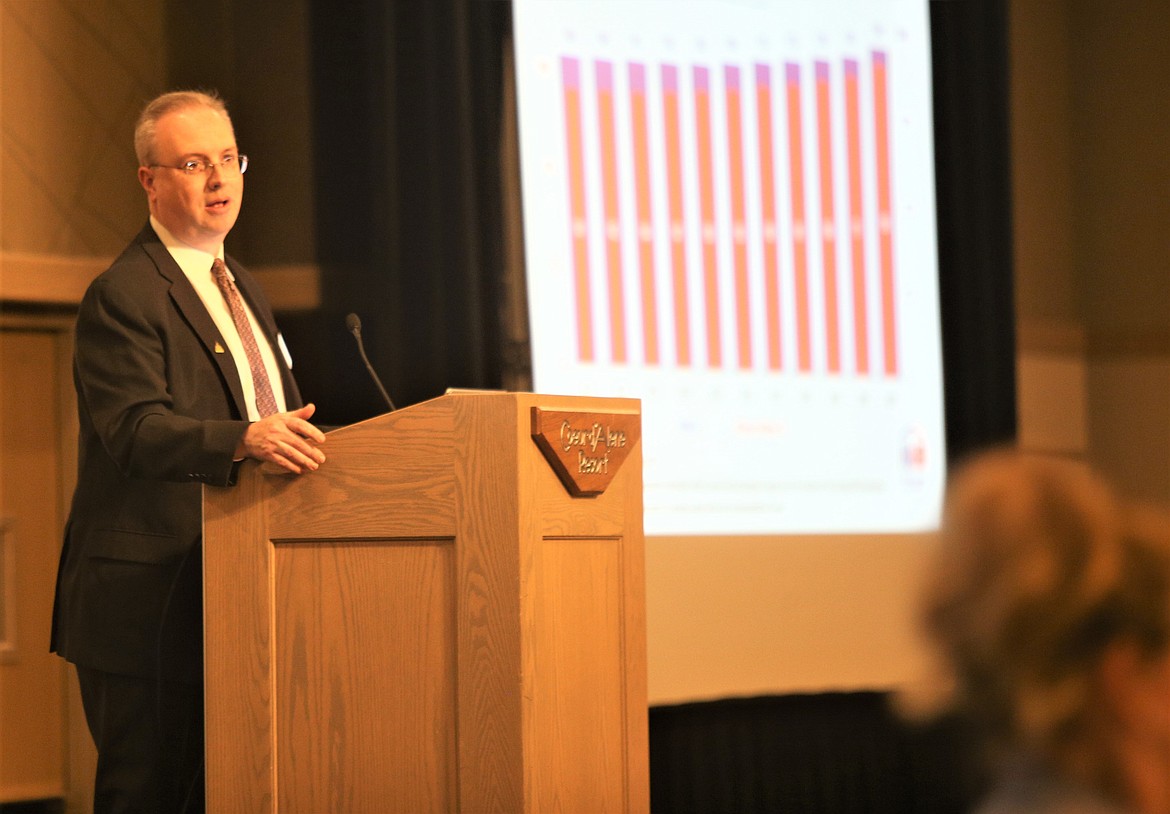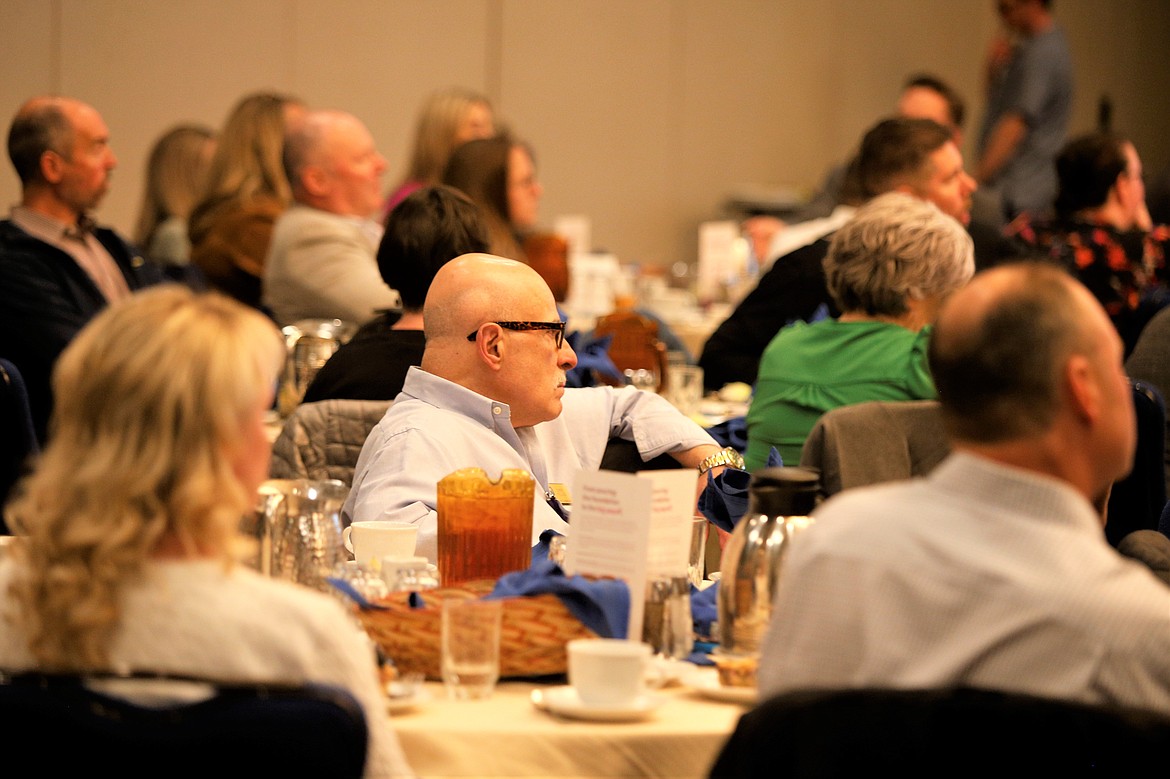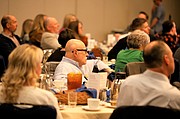Economist: Recession is coming
▶️ Listen to this article now.
COEUR d’ALENE — There is no longer a question of whether the U.S. is headed toward a recession, said Robert Dietz.
That is “100%,” he said Thursday.
“This is now a question of when and how severe,” Dietz said during the North Idaho Building Contractors Association’s Regional Economic Summit.
Dietz, chief economist and senior vice president for economics and housing policy for the National Association of Home Builders, told about 300 people at The Coeur d’Alene Resort he expects a “mild recession” next year.
With soaring housing prices, a continued labor shortage affecting production, declining stimulus impacts and inflation that’s not going away soon, it can’t be avoided, he said.
“Be ready for it,” Dietz said.
That means holding more cash and being more cautious when buying land and taking out loans.
“I think it will be a short recession. It's about pricing catching up and allowing the supply side for the economy to get where we need it to be,” Dietz said.
In a 45-minute program, he gave a gloomy, although still humorous, outlook for the economy. It wasn’t all bad.
On the positive side, he pointed to a strong labor market and healthy household balance sheets with more cash and lower credit card debt.
“The service sector is continuing to reopen, that's going to help economic growth,” he said.
In the long run, Dietz said there’s potential for homebuilding because not enough homes have been built over the last decade.
Housing is expected to fuel an economic recovery.
“The communities that have been able to build that housing affordably, they're going to attract businesses that are going to create jobs, and most importantly, to establish roots in those markets," he said.
But the country isn’t producing enough lumber to build those homes, Deitz said. He said the U.S. produced less softwood lumber in 2021 than it did in 2018.
He said the price of lumber per thousand board feet edged up to $971 in May, down from a high of $1,515 last year. In April 2020, it was $349.
“I will just tell you as an economist if we can't produce it here, we need to import it,” he said. “We get a third of our lumber from Canada. But we have a 12% tariff on Canadian lumber. That tariff is a tax that doesn't make any sense” as it drives up costs.
He expects inflation, running near a 40-year high of more than 8%, to start easing. It should get down to about 2.6% over the next couple of years, which is still considerably higher than 1.8% from 2016 to 2019.
“We're probably right now real close to peak inflation," he said.
Dietz said the 30-year fixed rate mortgage is averaging about 5.25%, and he believes it is headed higher before flattening out near 6%.
“I've heard people talking about mortgage interest rates at about 7%. I don't think they can get up to 7%,” he said.
Dietz made some key points about Idaho’s growth and rising construction costs that are hurting affordability of homes:
• From 2020 to 2021, population grew 2.9%, making it the fastest-growing state in the U.S.
• From October 2020 to October 2021, Idaho and Arizona had the fastest-growing home prices in the U.S. at 29%.
• About 44% of Kootenai County households can’t afford to pay the October 2021 average Kootenai County market rent of $1,402.
• The cost of land in Kootenai County has risen dramatically. Five years ago, 5-to-10 acre parcels were priced at about $5,000 to $6,000 per acre. Now, it's between $20,000 to $30,000 per acre depending on location and availability of utilities.
Dietz said the impact is that first-time homebuyers are not going to be able to afford anything, so they will likely live with their parents.
He said that 20 years ago, in the 25-to-34-year-old age group, one out of 10 lived at home with their parents. Today, it’s one out of five.
He said the current U.S. birth rate of 1.6% is the lowest since The Great Depression.
He said these areas — housing affordability and supply, marriage rates, birth rates, labor workforce — are linked more than people may realize.
“These things are connected,” he said.
Housing will fuel the economic recovery.
"You have to provide housing for the workers. You can't attract the workers without the housing," Dietz said. "And that's something Austin, Texas, right now is finding out. Their housing market has gone from hot to just unbelievably unaffordable. And it is going to limit the amount of businesses."
He said the country is short about 1.2 million construction workers.
"So the skilled labor shortage is getting worse for the industry," Dietz said.
He produced what he called the “saddest slide,” which showed the labor force participation rate for adult men in 1948 at 86%. Today, it’s 65%.
The labor force partition rate for women, in contrast, went from 33% in 1948 to 60% today.
So why aren't men working?
“We got more retirees, but a lot of it is sociological. You've got people who simply are not attached to labor force," Dietz said. "They're not trying to find work, which means they're dependent on either the government or their relatives or friends. This is a real challenge. And it's one of the reasons why the labor shortage is most intense."



